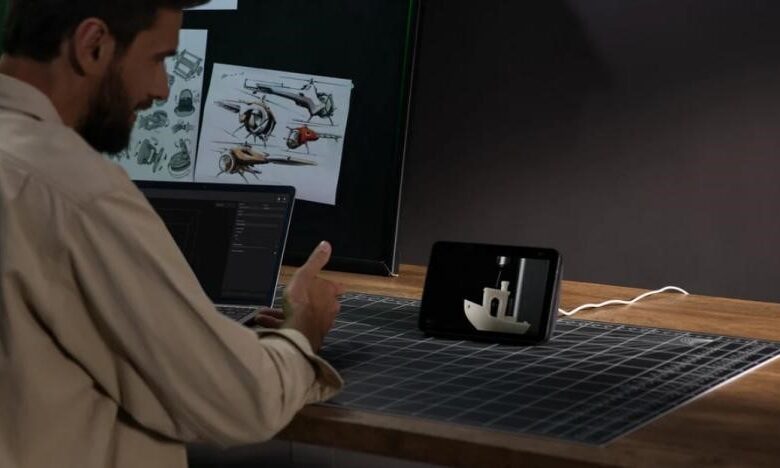How to Choose the Right 3D Printing Software

Choosing the right 3D printing software is crucial for bringing your ideas to life, whether you’re a novice or a seasoned professional. With numerous options available, the selection process can be overwhelming. This guide aims to demystify 3D printing software by breaking down what features to look for, determining your specific needs, and comparing popular tools. By the end of this article, you’ll be equipped with the knowledge to make an informed decision that aligns with your project goals and expertise level.
What Features Should You Look for in 3D Printing Software?
User-Friendliness for Beginners
Beginners should seek intuitive 3D printing software that simplifies the modeling process. Tools like TinkerCAD are great starting points due to their drag-and-drop interfaces and extensive tutorials. Software with gamified elements, like 3D Slash, makes learning enjoyable by turning model creation into a game. Ensure the software supports basic functions like scaling, rotating, and slicing to help you grasp foundational concepts before advancing to more complex tasks.
See also: Night Photography Techniques For Amazing Low-Light Shot
Advanced Features for Professionals
For professionals, advanced features become essential. Look for software that provides detailed control over modeling, slicing, and printing parameters. Tools like Blender offer robust sculpting, texturing, and animation capabilities, making them versatile for different project types. Integration with other professional tools and plugins can enhance your workflow. The ability to manipulate mesh geometry and perform simulations may also be necessary for complex designs.
Compatibility and Integration
Compatibility is a key consideration when choosing 3D printing software. Ensure the software supports your 3D printer model and common file formats like STL, OBJ, and AMF. Integration with your existing design software and cloud services can streamline workflow, making the transition from design to printing seamless. Tools like Ultimaker Cura provide extensive customization options and are compatible with multiple printer brands, offering greater flexibility.
How to Choose the Best Software for Your 3D Printing Needs?
Determine Your Purpose
First, identify the type of projects you plan to undertake. If you are interested in creating functional prototypes, software with strong engineering design capabilities is crucial. Artists might prefer tools that allow for intricate sculpting and texturing. Educators should seek software geared toward learning, such as BlocksCAD, which combines coding with 3D modeling, making it suitable for classroom environments.
Software for Specific Projects
Specific projects may require specialized software features. Architects can benefit from SketchUp Free for its ease in building structural models. For digital sculpting projects, Sculptris offers intuitive tools for organic shapes. Ensure the software you choose provides the tools and capabilities necessary for your particular project type to avoid limitations during the design and printing process.
Budget and Pricing Plans
Your budget will also influence your choice of software. Start with free options like TinkerCAD or Blender if you are cost-sensitive. These tools offer substantial functionality without expense. For more advanced features, consider software with scalable pricing plans such as SelfCAD, which provides additional capabilities under a subscription model. Weighing the cost against the benefits will help ensure you get the best value for your investment.
Which 3D Printing Software is Best for Beginners?
3D Slash for Gamified Modeling
3D Slash offers a unique, gamified approach to 3D modeling, making it perfect for beginners or younger users. The software uses a cube-based system akin to building blocks, enabling users to manipulate cubes to create designs easily. While this approach limits the complexity of possible designs, it provides an enjoyable introduction to 3D modeling. Its fun and straightforward interface makes the learning curve virtually non-existent, ideal for educational environments.
Morphi for Interactive Touch Designs
Morphi is a touch-based app designed for creating 3D models on tablets. Its intuitive interface is accessible to all skill levels, making it a good choice for beginners and educators. The app includes AR viewing, which allows you to interact with your designs in a real-world context. Although Morphi lacks advanced features suitable for professional use, its interactive nature makes it ideal for simple projects and learning.
BlocksCAD for Educational Use
BlocksCAD merges 3D modeling with coding through an engaging block-based interface similar to Scratch. This combination makes it an excellent educational tool for teaching STEM concepts while allowing users to create 3D models. Although the software is designed primarily for educational purposes and lacks advanced tools, its ability to teach coding and 3D modeling simultaneously offers a unique educational advantage.

What Are the Advantages of Popular 3D Printing Software?
Blender’s Versatility and Steep Learning Curve
Blender stands out for its extensive suite of modeling, animation, and rendering tools. While incredibly versatile and capable of handling complex projects, it comes with a steep learning curve. Beginners might find Blender overwhelming due to its plethora of options and detailed settings. However, for those willing to invest the time, Blender offers unmatched flexibility and power, making it a popular choice among advanced users.
Cura’s Customization vs. Simplicity
Cura, developed by Ultimaker, is a widely used slicing software known for its balance between simplicity and advanced customization. Its user-friendly interface makes it accessible for beginners, while extensive customization options cater to advanced users seeking detailed control over print settings. However, some of the more advanced features require manual configuration, which might pose a challenge for novices.
Meshmixer for Repairing and Modifying Models
Meshmixer by Autodesk is an excellent tool for repairing and modifying 3D meshes. It offers robust features for mesh repair, model modifications, and printability analysis. Initially, users might find its interface complex, but once familiarized, it becomes an indispensable tool for ensuring print success. Meshmixer excels in refining existing models rather than creating detailed designs from scratch, making it indispensable for optimization and preparation.
Conclusion
Choosing the right 3d printer software involves assessing your skills, needs, and budget. Prioritize user-friendliness if you’re a beginner, focusing on tools like TinkerCAD or 3D Slash. Professionals should seek software with advanced features, such as Blender. Ensure compatibility with your hardware and other software tools to streamline your workflow. Testing free versions or demos can also help you make an informed choice before committing. By understanding these factors, you can select the ideal software to transform your creative ideas into tangible prints.



